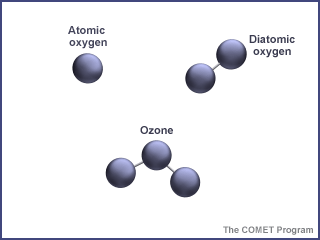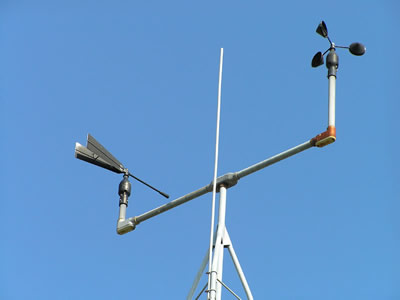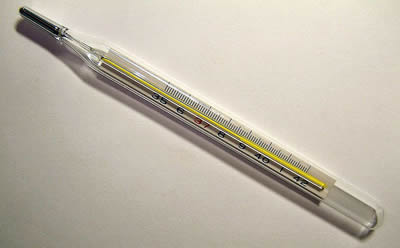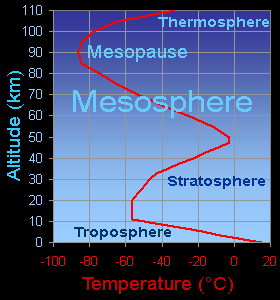As you go higher in the mesosphere, the air gets colder.
Click on image for full size
Original artwork by Windows to the Universe staff (Randy Russell).
Temperature in the Mesosphere
The top of the mesosphere is the coldest part of the atmosphere. It can get down to -90° C (-130° F) there! As you go higher in the mesosphere, the air gets colder.
The air is much thinner (less dense) in the mesosphere than in the stratosphere below. There are fewer air molecules to absorb incoming electromagnetic radiation from the Sun. That includes molecules of ozone, which absorb ultraviolet radiation and heat the stratosphere. In the mesosphere, the thin air and small amounts of ozone keep the air from warming much.
You might also be interested in:

Text for this level has not been written yet. Please see the "Intermediate" text for this page if you want to learn about this topic. To get to the "Intermediate" text, click on the blue "Intermediate"
...more
Ozone is a special kind of oxygen molecule. Normal oxygen molecules (O2), the kind we need to breathe, have two oxygen atoms. Ozone molecules (O3) have three oxygen atoms. Ozone forms when a photon of
...more
Rainbows appear in the sky when there is bright sunlight and rain. Sunlight is known as visible or white light and is actually a mixture of colors. The sun's rays pass through millions of raindrops. A
...more
It takes the Earth one year to travel around the sun one time. During this year, there are four seasons: summer, autumn, winter, and spring. Each season depends on the amount of sunlight reaching the
...more
Scientists sometimes travel in airplanes that carry weather instruments in order to gather data about the atmosphere. These research aircraft bring air from the outside into the plane so scientists can
...more
An anemometer is a weather instrument used to measure the wind (it can also be called a wind gauge). These instruments can be used in a backyard weather station or on a well-equipped scientific research
...more
Thermometers measure temperature. "Thermo" means heat and "meter" means to measure. You can use a thermometer to measure the temperature of many things, including the temperature of
...more















